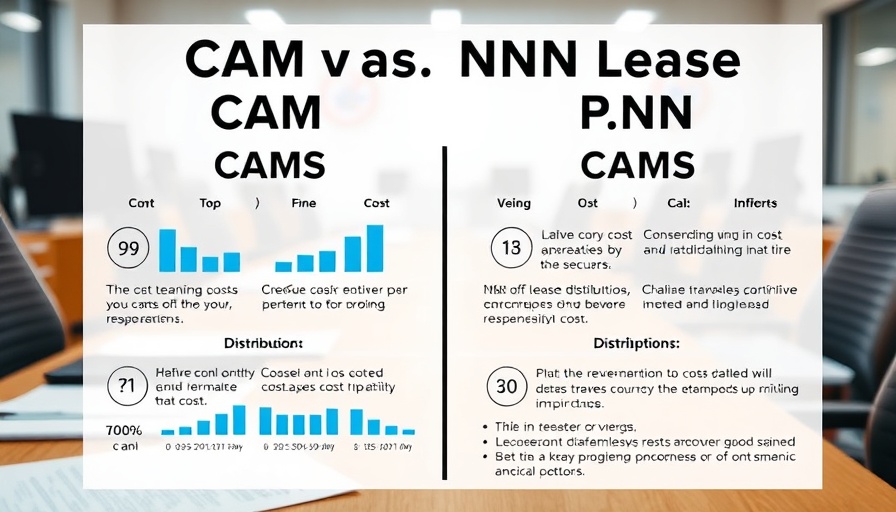
Understanding the Basics of CAM and NNN Leases
In the world of commercial real estate, navigating lease agreements can be daunting for both investors and tenants alike. Among the most prevalent types of leases are Common Area Maintenance (CAM) leases and Triple Net (NNN) leases. Knowing the critical distinctions between the two is fundamental for making wise financial decisions and managing risk effectively.
What Exactly is a CAM Lease?
A Common Area Maintenance lease involves charges that are added to a tenant's base rent to cover the upkeep of communal spaces within a property, such as lobbies, hallways, and outside areas. These expenses are typically calculated as a pro-rated share based on the space a tenant occupies, ensuring that landlords can maintain these shared facilities without facing a financial strain. This setup primarily seeks to keep common areas in good condition, aiding in tenant satisfaction and property value preservation.
Decoding NNN Leases: A Different Approach
Unlike CAM leases, Triple Net leases shift a more significant operational responsibility onto tenants, requiring them to cover base rent, property taxes, insurance, and maintenance expenses, including CAM fees. The appeal of NNN leases often lies in their lower base rents, as tenants absorb most of the property’s ongoing costs. However, tenants should prepare for potential fluctuations in expenses linked to tax or insurance increases.
The Financial Implications for Tenants and Landlords
Both CAM and NNN structures have far-reaching financial implications. Landlords may gravitate towards NNN leases as they stabilize income by delegating most operating costs to tenants, which generally elevates their net operating income (NOI). On the flip side, this situation calls for tenants to comprehend the comprehensive financial obligations they undertake. As such, understanding these lease types is vital for sound business planning and financial forecasting.
Considering Lease Types: Informed Decision-Making
Ultimately, tenants and investors in commercial real estate must grasp the nuances of each lease type—CAM and NNN—to make informed choices that align with their financial goals and risk thresholds. With knowledge comes power; thus, building a solid understanding of these arrangements can foster robust negotiations, leading to advantageous terms.
 Add Row
Add Row  Add
Add 




Write A Comment